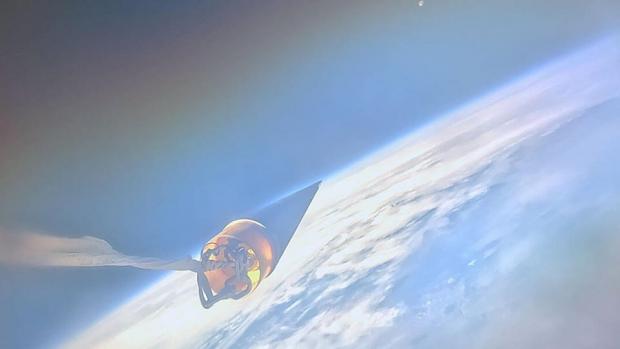
Breaking News
 President Trump Sues Leftist Media Outlets
President Trump Sues Leftist Media Outlets
 Kurt Vonnegut's Lost Board Game Finally Published After 70 Years
Kurt Vonnegut's Lost Board Game Finally Published After 70 Years
 Kennedy's Nomination to Lead HHS Answers His Prayers - and Mine
Kennedy's Nomination to Lead HHS Answers His Prayers - and Mine
Top Tech News
 Muscle-powered mechanism desalinates up to 8 liters of seawater per hour
Muscle-powered mechanism desalinates up to 8 liters of seawater per hour
 Student-built rocket breaks space altitude record as it hits hypersonic speeds
Student-built rocket breaks space altitude record as it hits hypersonic speeds
 Researchers discover revolutionary material that could shatter limits of traditional solar panels
Researchers discover revolutionary material that could shatter limits of traditional solar panels
 In case you missed it, Ben Affleck just dropped the best talk on AI and where we're heading:
In case you missed it, Ben Affleck just dropped the best talk on AI and where we're heading:
 LG flexes its display muscle with stretchable micro-LED screen
LG flexes its display muscle with stretchable micro-LED screen
 LiFePO4 Charging Guidelines: What is 100%? What is 0%?! How to Balance??
LiFePO4 Charging Guidelines: What is 100%? What is 0%?! How to Balance??
 Skynet On Wheels: Chinese Tech Firm Reveals Terrifying Robo-Dog
Skynet On Wheels: Chinese Tech Firm Reveals Terrifying Robo-Dog
 Energy company claims its new fusion technology can provide heat and power to 70,000 homes:
Energy company claims its new fusion technology can provide heat and power to 70,000 homes:
 Wi-Fi Can be Used to Influence Brainwaves, Has Potential for Hypnotic Effects and Social Engineering
Wi-Fi Can be Used to Influence Brainwaves, Has Potential for Hypnotic Effects and Social Engineering
 Startups Like Neuralink And Science Corp. Are Aiming To Help The Blind See Again
Startups Like Neuralink And Science Corp. Are Aiming To Help The Blind See Again
Student-built rocket breaks space altitude record as it hits hypersonic speeds

The spacecraft, Aftershock II, has now bested a 20-year-old record held by hobbyists with the Civilian Space eXploration Team (CSXT), who managed to launch their rocket 380,000-feet high in 2004.
But USC's Aftershock II also reached hypersonic speeds — reaching a maximum velocity of 5,283 feet-per-second at Mach 5.5, or over five times the speed of sound.
Now their intentionally lightweight rocket, which comes in at about 330 pounds, has made history as the first launch by individuals outside of government or private industry to ever ascend this far beyond Earth's atmosphere.
Undergraduate student Ryan Kraemer,, who worked as an executive engineer on the project, said Aftershock II boasted 'the most powerful solid-propellant motor ever fired by students and the most powerful composite case motor made by amateurs.'
The 13-ft tall, eight-inch diameter craft was fueled by a custom-made, 'ammonium perchlorate composite' solid chemical propellant, invented by students themselves.
'Using a formula developed by students in the club,' according to the USC Rocket Propulsion Lab (USCRPL), 'each propellant grain is made by USCRPL starting from raw chemicals, setting the club apart from many other collegiate rocketry teams.'
Fittingly, USC's Aftershock II and CSXT's prior record-holder were both launched from the same spot: the remote Black Rock Desert, 100 miles north of Reno, Nevada.
USCRPL students last made history in 2019, when the club became the first student group to fire a rocket above the Kármán line: the internationally recognized legal boundary dividing Earth's atmosphere from outer space, 62 miles above sea level.
Aftershock II climbed a further 27 miles into space, for a total of 89 miles.
'This extraordinary group of students shows how to imagine, what can be done in the lab, and how to make it a reality.' Yannis Yortsos, dean of the USC's Los Angeles-based Viterbi School of Engineering, said in a university statement.
'It is thrilling to see how they have now shattered not only their previous global student record of reaching the Kármán line,' Yortsos added, 'but also the record of any amateur team in history.'

 The Menace of Tariffs
The Menace of Tariffs

